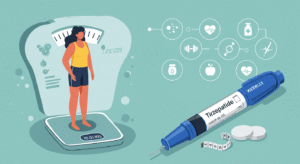Hormonal changes significantly impact muscle mass and strength, influencing both anabolic (muscle-building) and catabolic (muscle-breaking) processes. The primary hormones involved in muscle regulation include testosterone, growth hormone, insulin-like growth factor-1 (IGF-1), and cortisol.
Testosterone, the primary male sex hormone, is a potent anabolic hormone that promotes muscle protein synthesis and increases muscle mass and strength. Testosterone levels peak during adolescence and early adulthood, contributing to the development of muscle mass. As men age, testosterone levels gradually decline, leading to a loss of muscle mass and strength, a condition known as sarcopenia. Testosterone replacement therapy can help mitigate these effects, improving muscle mass and strength in older men with low testosterone levels.
Growth hormone, produced by the pituitary gland, and IGF-1, produced in response to growth hormone, play crucial roles in muscle growth and repair. These hormones stimulate protein synthesis, promote the proliferation of satellite cells (muscle stem cells), and enhance muscle regeneration. Growth hormone levels decline with age, contributing to the loss of muscle mass and strength. Growth hormone therapy can help improve muscle mass and function, although its use is often limited to specific medical conditions.
Cortisol, a catabolic hormone produced by the adrenal glands, increases in response to stress and has a muscle-breaking effect. Elevated cortisol levels lead to the breakdown of muscle proteins for energy, reducing muscle mass and strength. Chronic stress, poor sleep, and inadequate nutrition can increase cortisol levels, negatively impacting muscle health. Managing stress, ensuring adequate rest, and maintaining a balanced diet can help mitigate the catabolic effects of cortisol.
Estrogen also influences muscle mass and strength, particularly in women. Estrogen promotes muscle repair and regeneration and helps maintain muscle strength. The decline in estrogen levels during menopause contributes to the loss of muscle mass and strength in women. Hormone replacement therapy can help mitigate these effects, although its use must be carefully managed due to potential risks.
In conclusion, hormonal changes significantly impact muscle mass and strength. Testosterone, growth hormone, IGF-1, cortisol, and estrogen each play distinct roles in muscle regulation. Understanding these hormonal influences is crucial for managing muscle health, particularly in aging populations, and for promoting overall physical fitness and strength.


